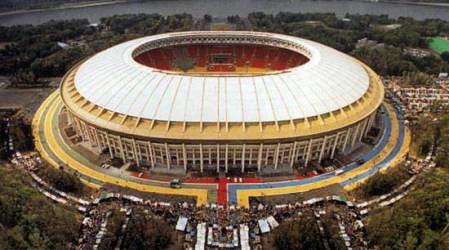The Sydney Opera House is opened by Elizabeth II after 14 years of construction.
The Sydney Opera House is one of the most iconic and recognizable landmarks in the world, located in Sydney, Australia. It is renowned for its distinctive and innovative design, which sets it apart as a masterpiece of 20th-century architecture.
Architectural Marvel: The Sydney Opera House was designed by the Danish architect Jørn Utzon and opened on October 20, 1973. Its unique and modernist design features a series of sail-like shells or “sails” that appear to be billowing in the wind.
UNESCO World Heritage Site: In 2007, the Sydney Opera House was designated a UNESCO World Heritage Site, recognizing its architectural significance and contribution to the cultural heritage of humanity.
Location: It is situated on Bennelong Point, a prominent peninsula that juts out into Sydney Harbour. This prime waterfront location offers stunning views of the Sydney Harbour Bridge and the city’s skyline.
Performance Venues: The Sydney Opera House is a multi-venue performing arts center. It houses several performance venues, the most notable of which are the Concert Hall, Opera Theatre, Drama Theatre, and the Joan Sutherland Theatre. These venues host a wide range of performances, including opera, ballet, symphony concerts, theater, and more.
Versatile Programming: The Opera House is not limited to classical performances but also hosts a diverse array of events, including contemporary music concerts, comedy shows, talks, and cultural festivals.
Acoustics: Each of the performance venues in the Sydney Opera House has been acoustically designed to ensure optimal sound quality for different types of performances. The Concert Hall, for example, is known for its exceptional acoustics and is often used for orchestral and choral performances.
Tours: Guided tours are available to the public, allowing visitors to explore the interior of the Sydney Opera House, learn about its history, architecture, and enjoy panoramic views of Sydney Harbour from various vantage points.
Cultural Icon: The Sydney Opera House is not just a venue for the performing arts; it is also a symbol of Australian culture and a testament to human creativity. Its image is widely associated with Australia and is featured on various forms of media and merchandise.
Economic and Cultural Impact: The Sydney Opera House has a significant impact on both the cultural and economic aspects of Sydney and Australia as a whole. It attracts millions of tourists annually and contributes to the city’s cultural vibrancy.
Renovations and Maintenance: Over the years, the Sydney Opera House has undergone several renovations and maintenance projects to preserve its architectural integrity and ensure that it continues to serve as a world-class performing arts venue.




